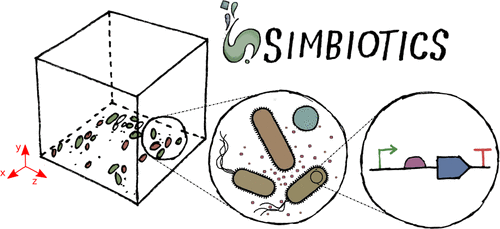
Simbiotics is a spatially explicit multiscale modeling platform for the design, simulation and analysis of bacterial populations. Systems ranging from planktonic cells and colonies, to biofilm formation and development may be modeled. Representation of biological systems in Simbiotics is flexible, and user-defined processes may be in a variety of forms depending on desired model abstraction.
Simbiotics provides a library of modules such as cell
- geometries
- physical force dynamics
- genetic circuits
- metabolic pathways
- chemical diffusion
- cell interactions.
Model defined processes are integrated and scheduled for parallel multithread and multi-CPU execution. A virtual lab provides the modeler with analysis modules and some simulated lab equipment, enabling automation of sample interaction and data collection. An extendable and modular framework allows for the platform to be updated as novel models of bacteria are developed, coupled with an intuitive user interface to allow for model definitions with minimal programming experience.
Simbiotics can integrate existing standards such as SBML, and process microscopy images to initialize the 3D spatial configuration of bacteria consortia. Two case studies, used to illustrate the platform flexibility, focus on the physical properties of the biosystems modeled. These pilot case studies demonstrate Simbiotics versatility in modeling and analysis of natural systems and as a CAD tool for synthetic biology.
More: SyntheticBioligy
